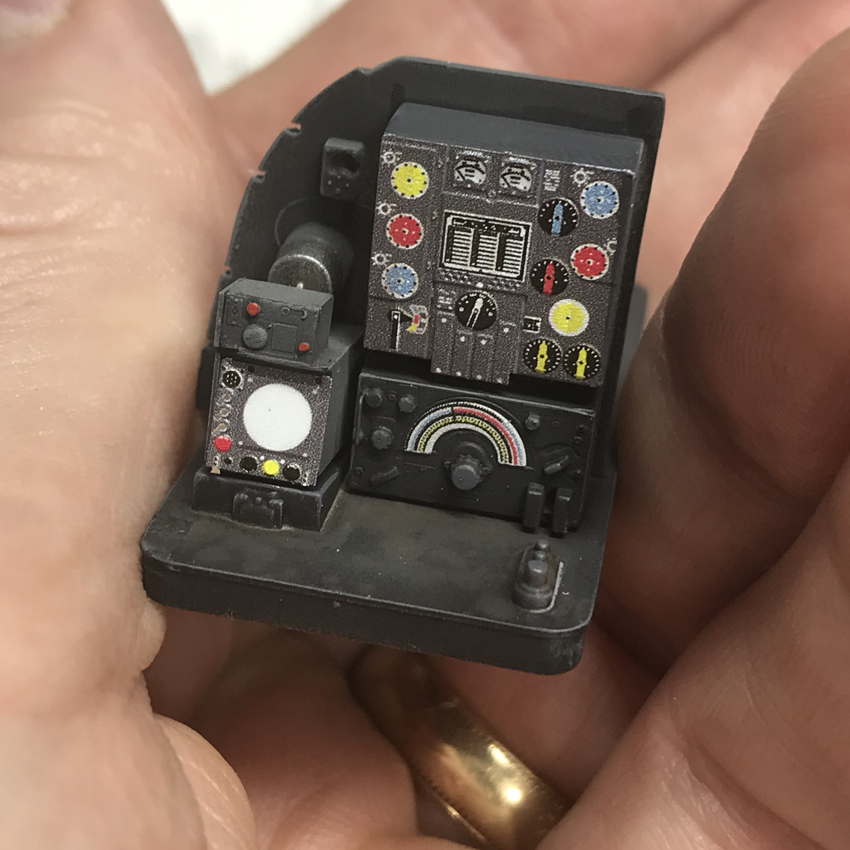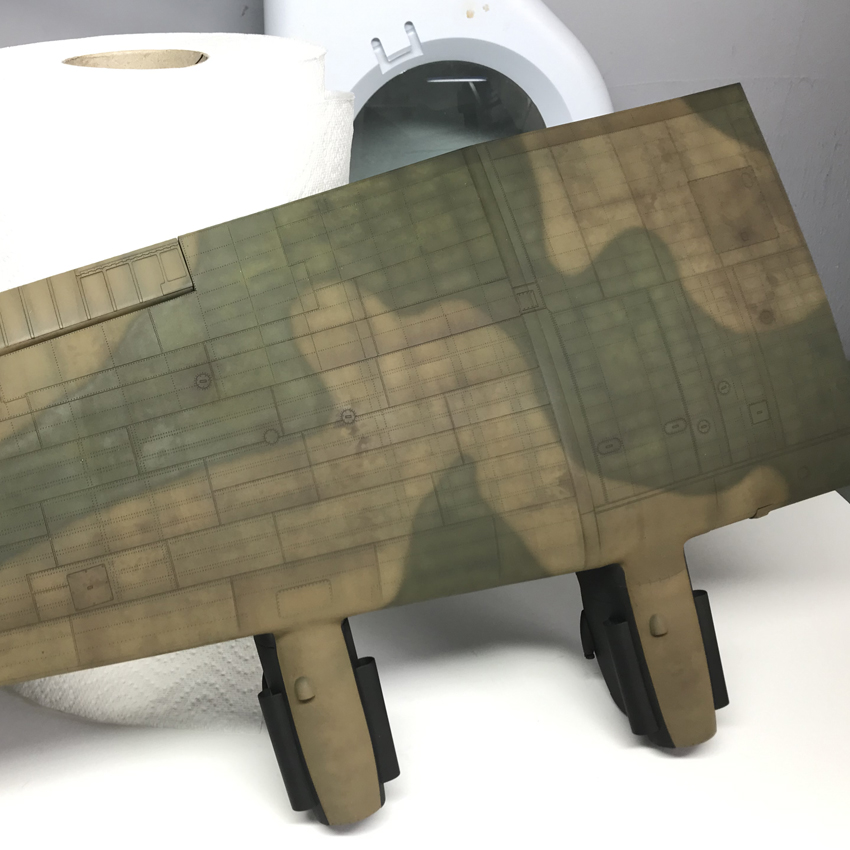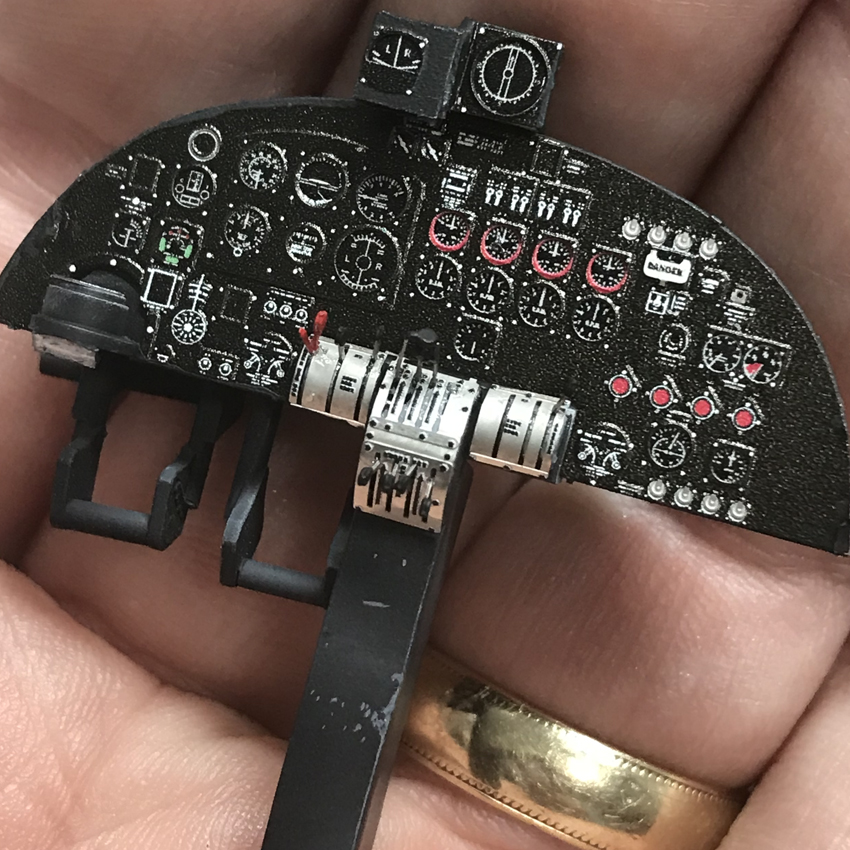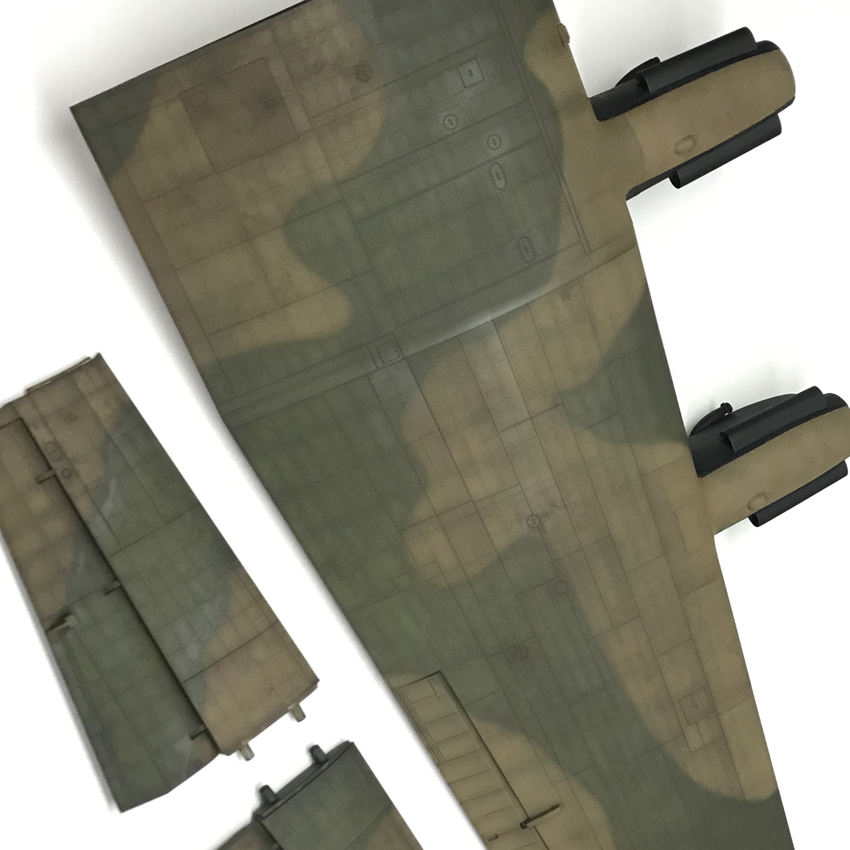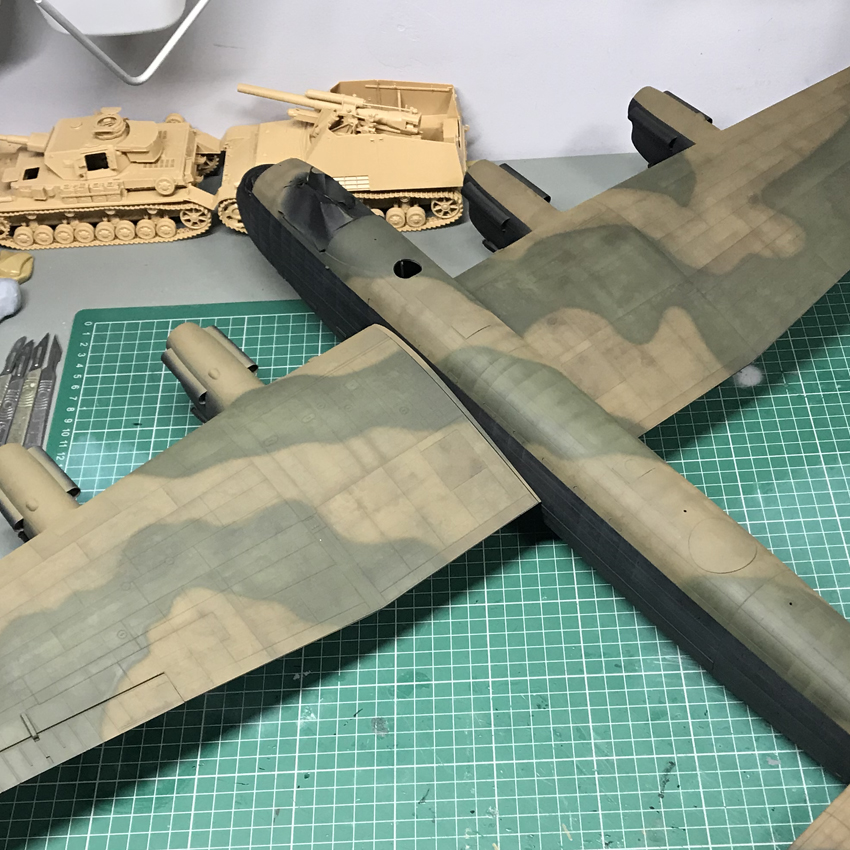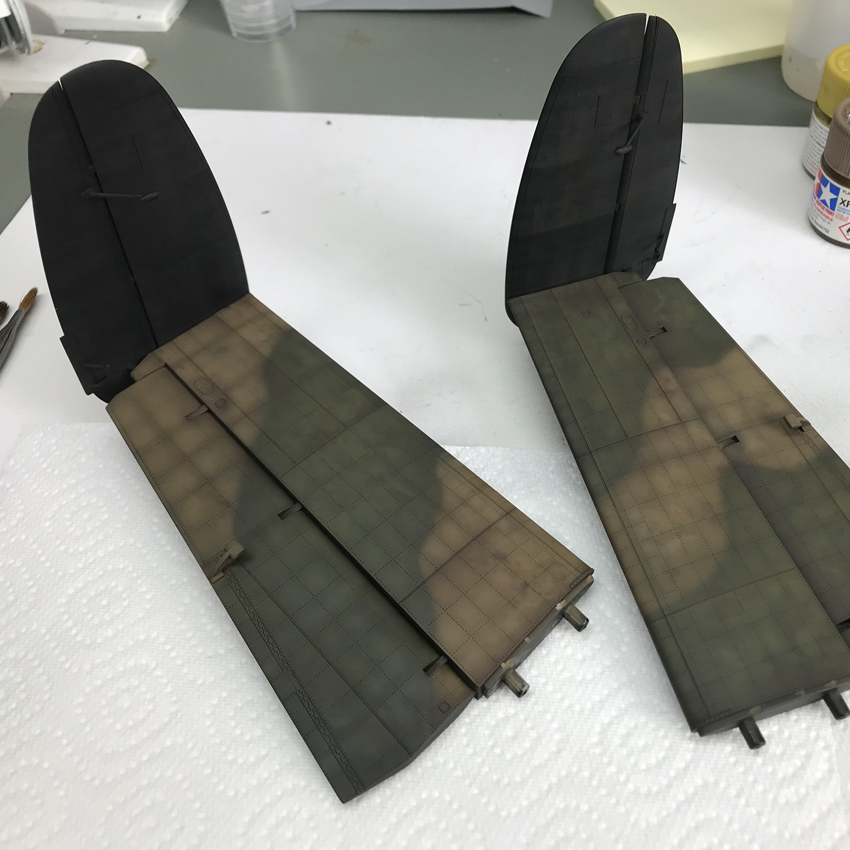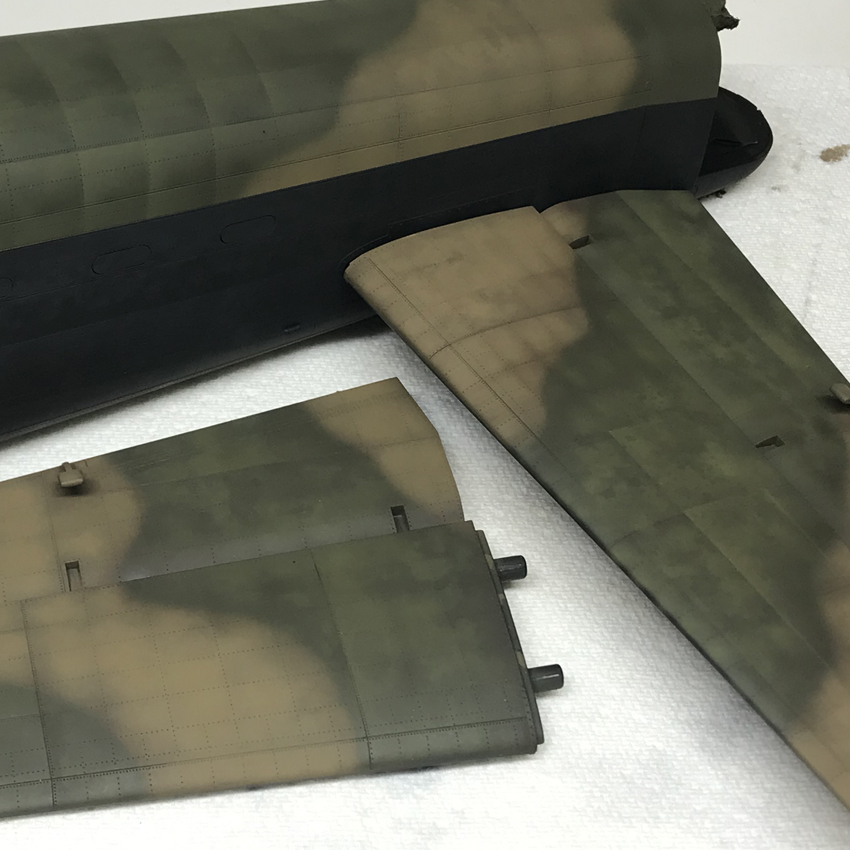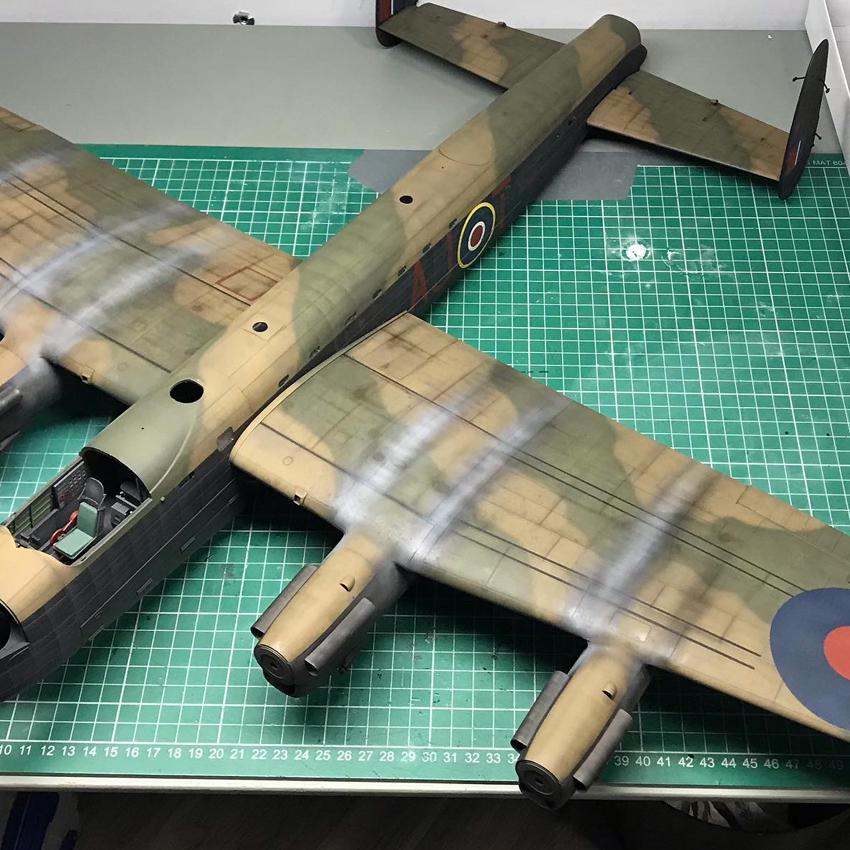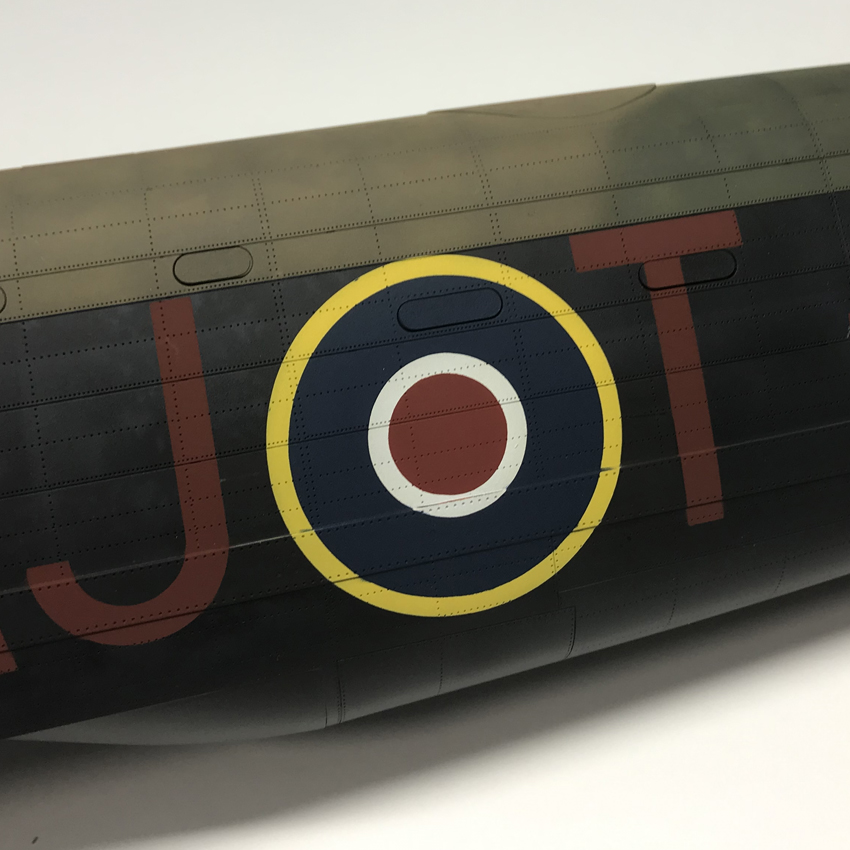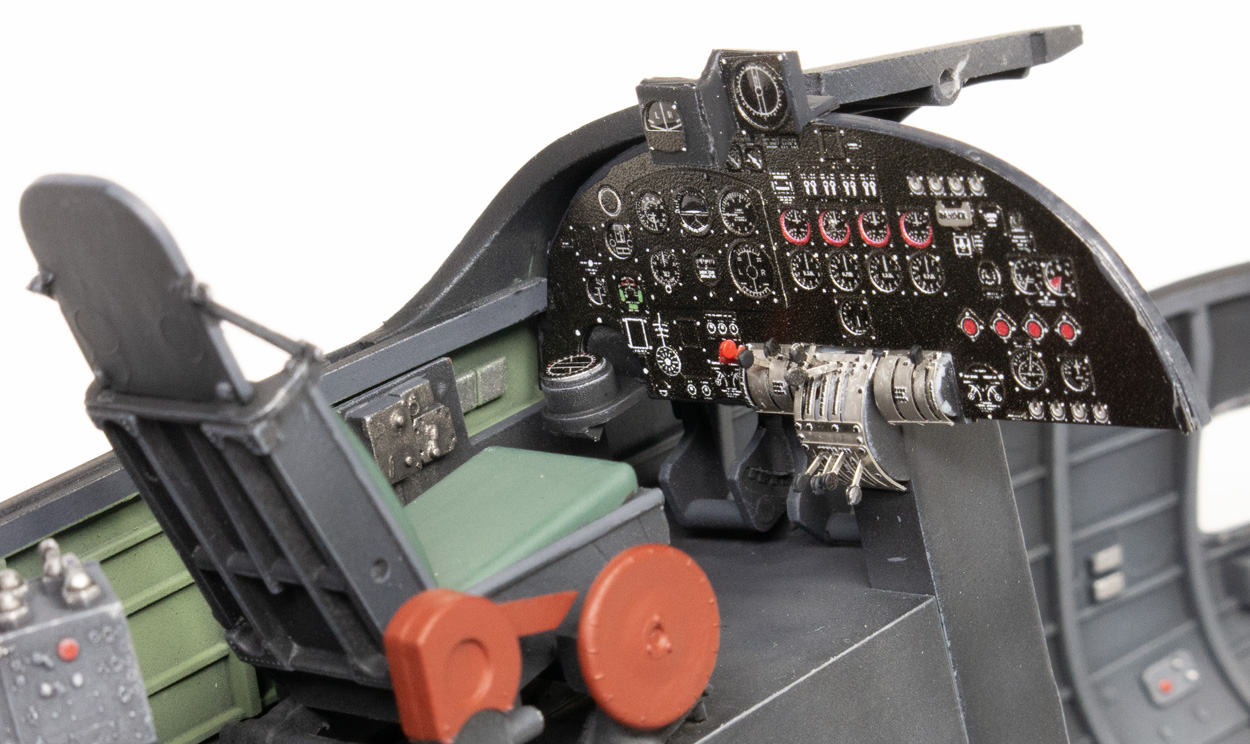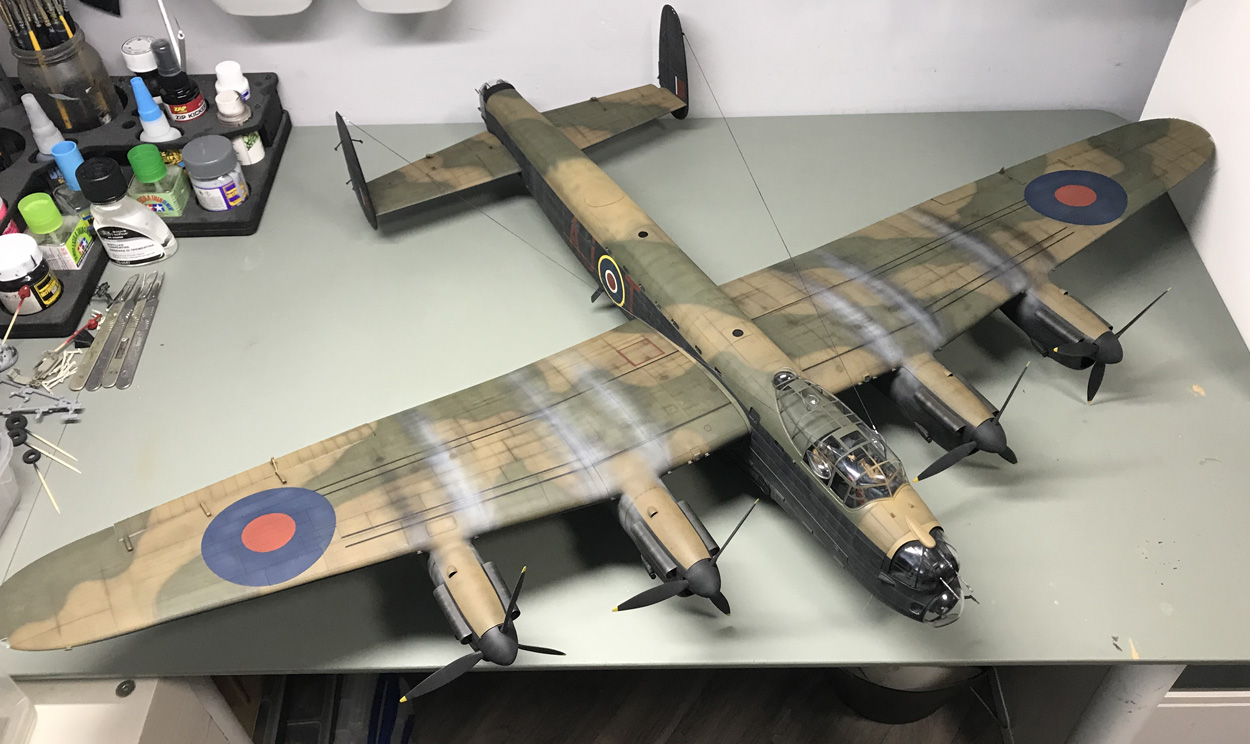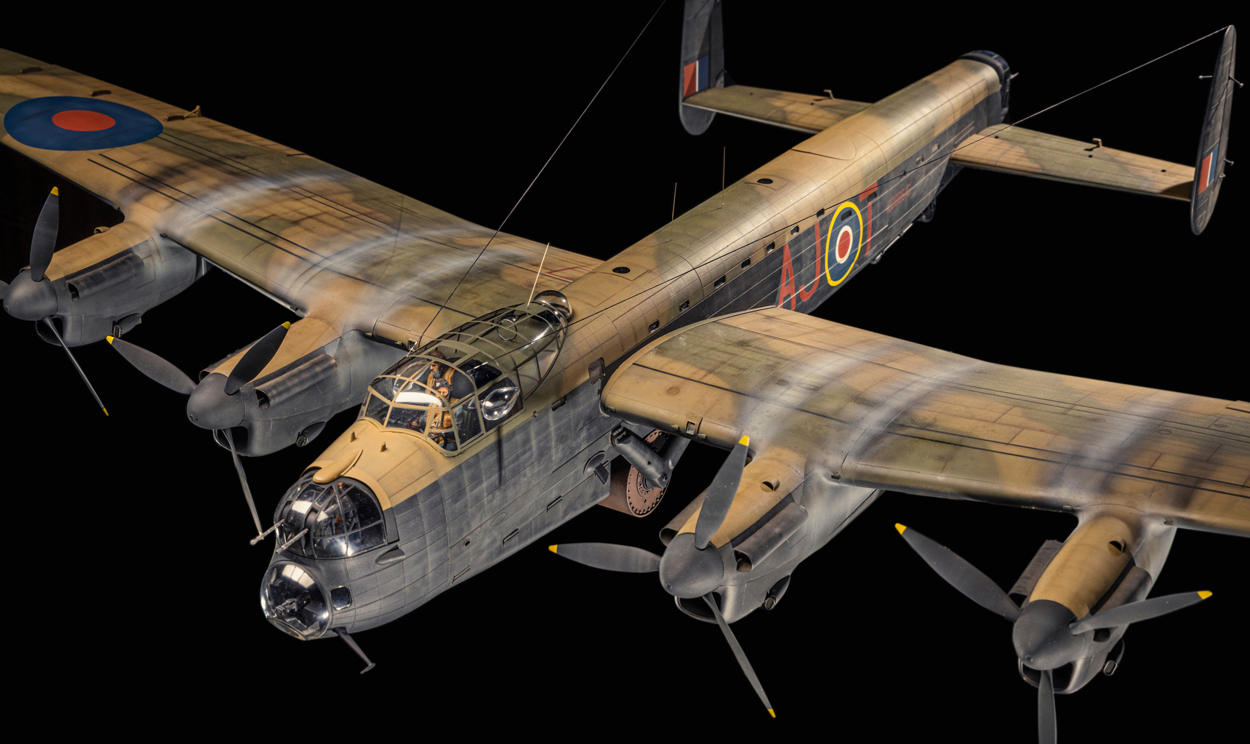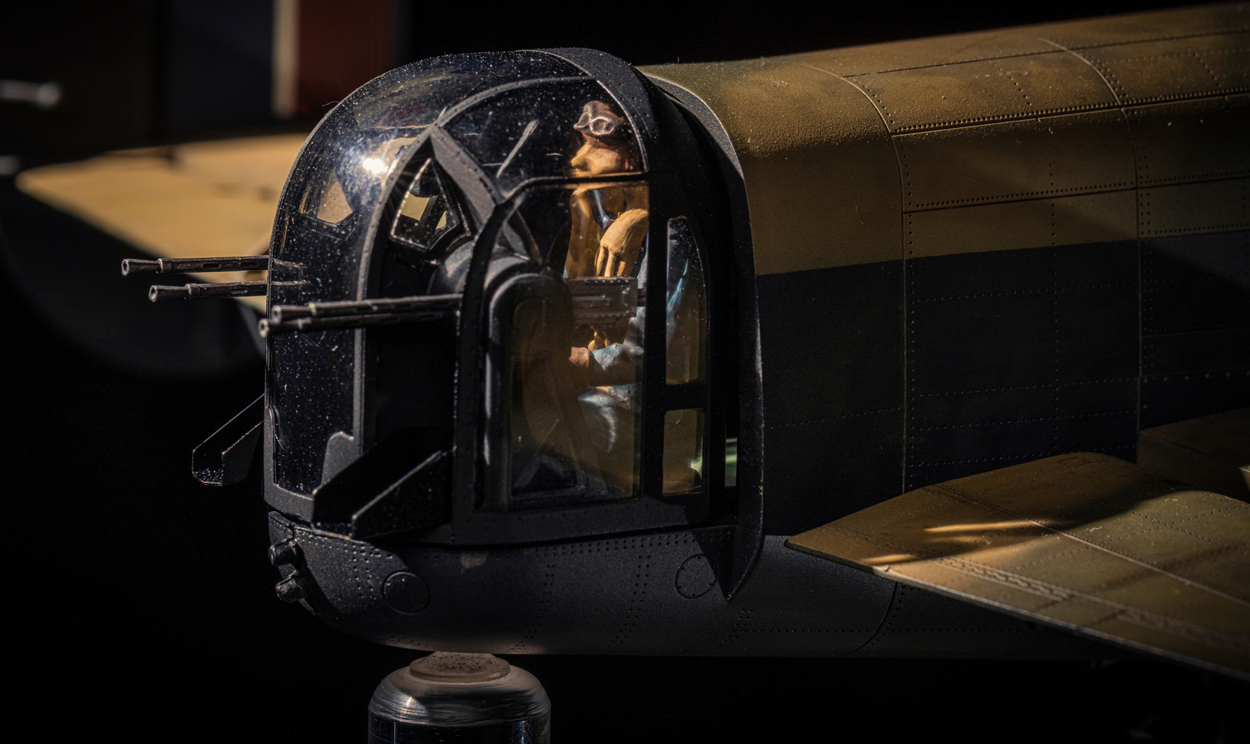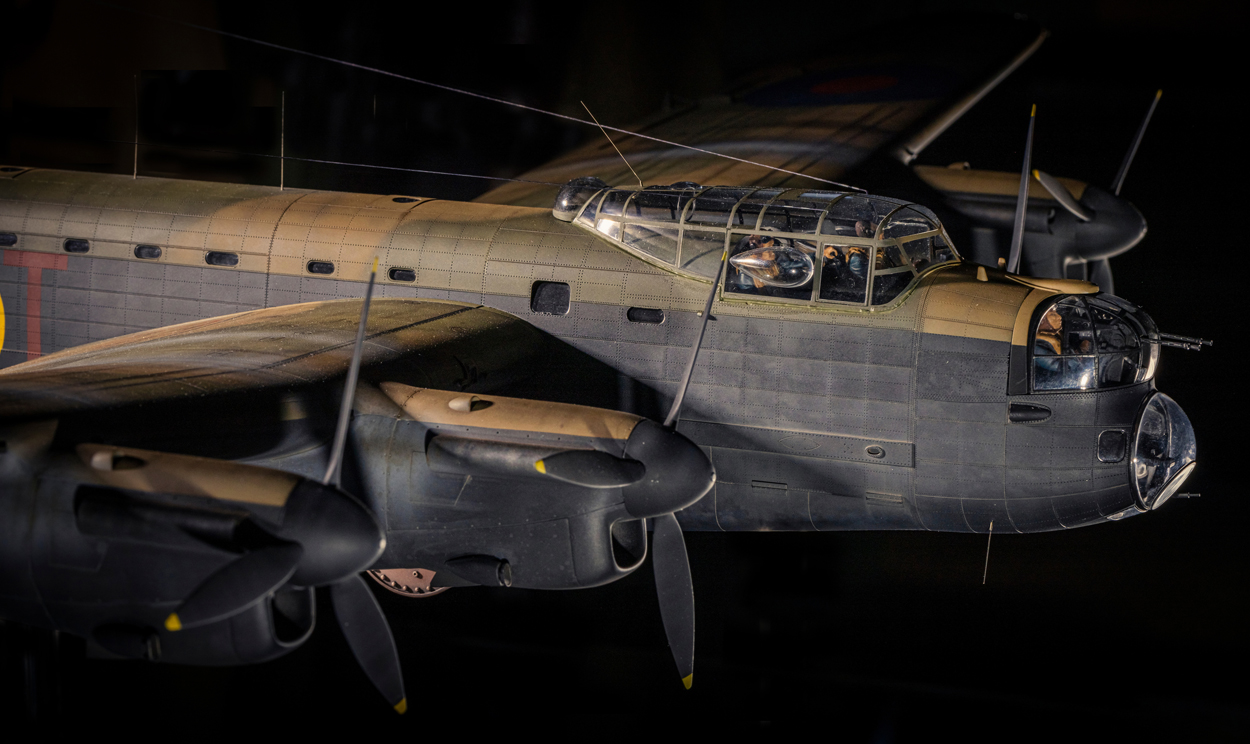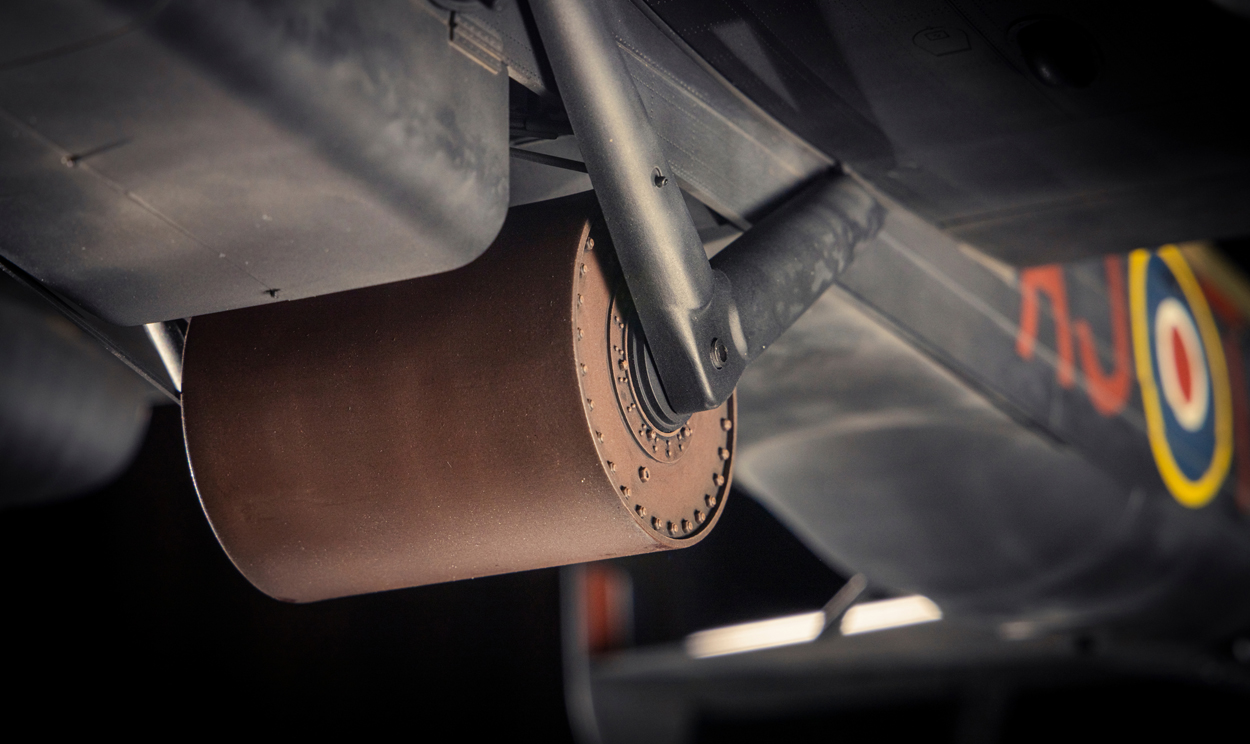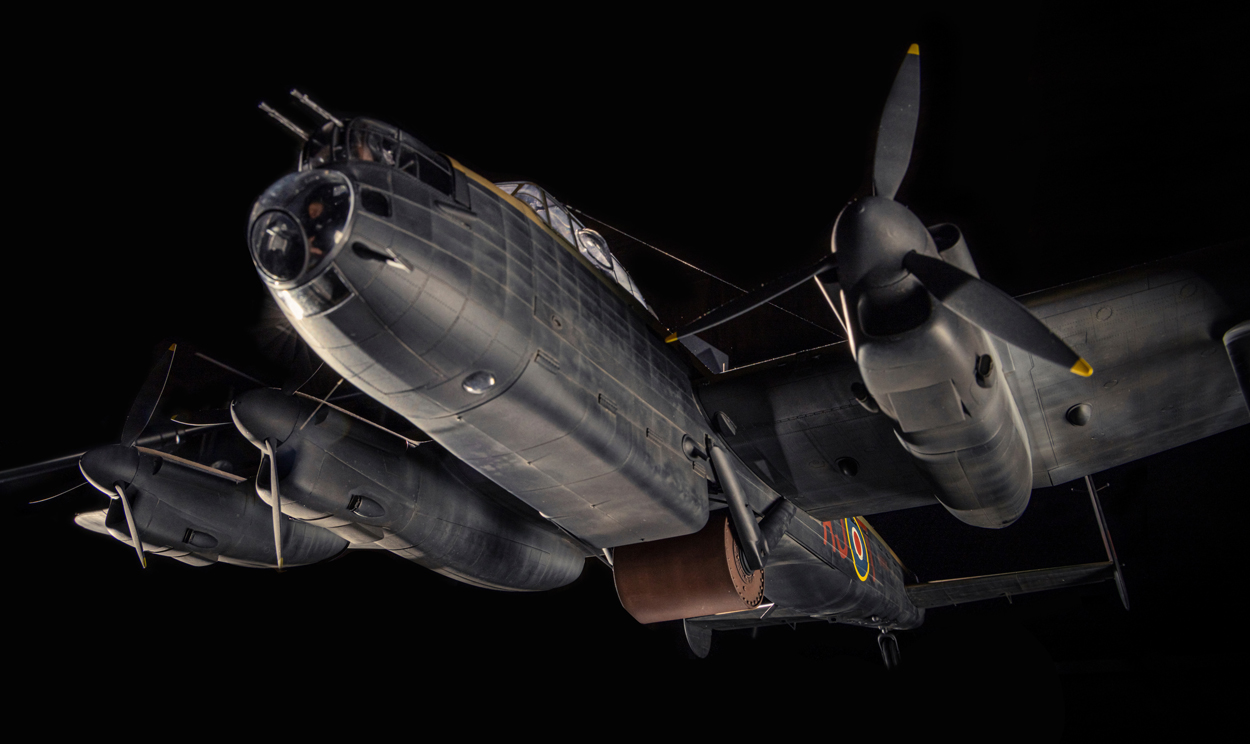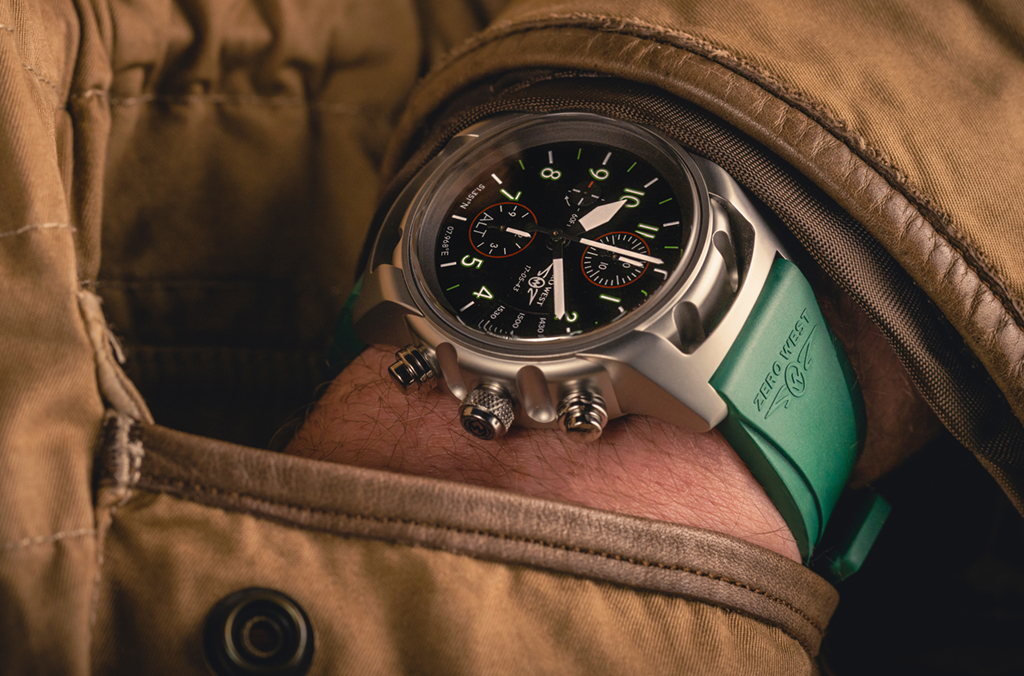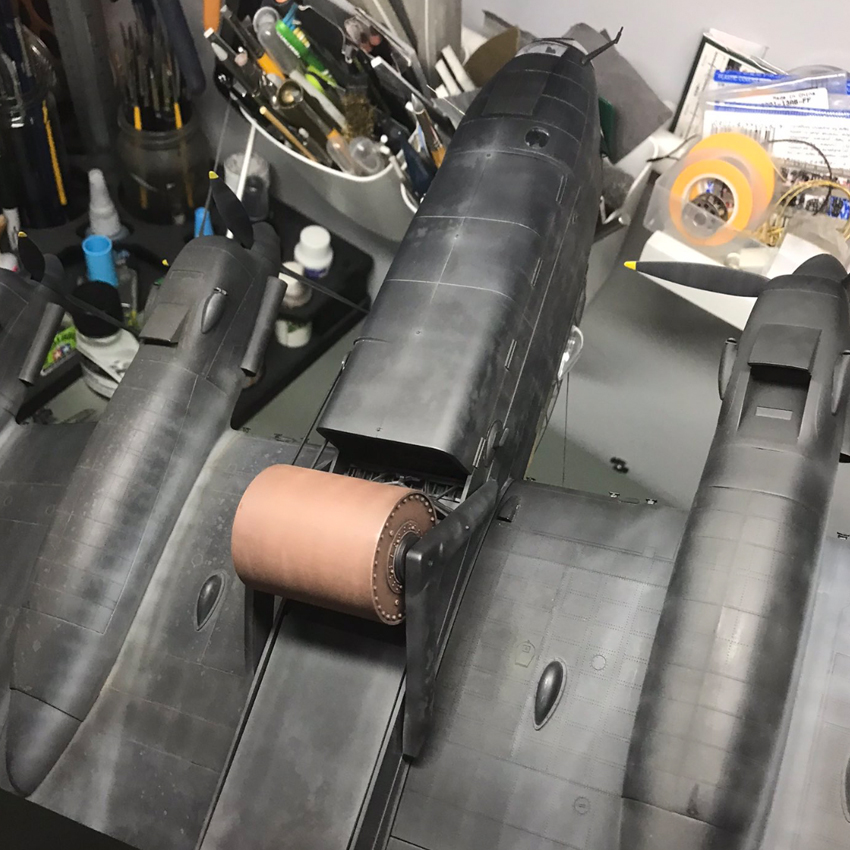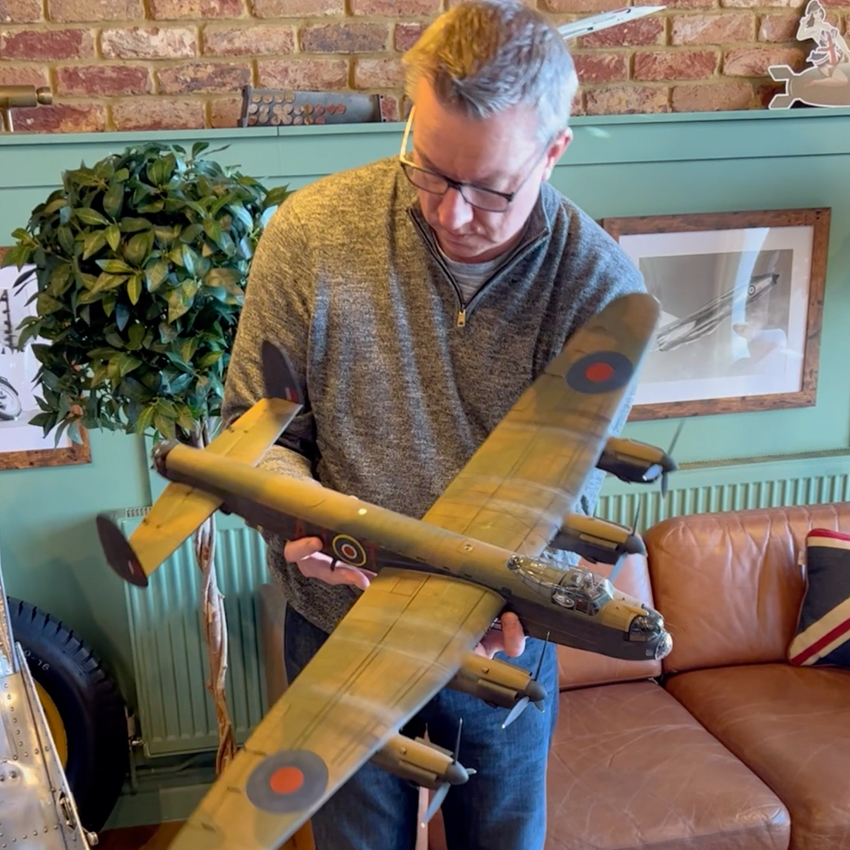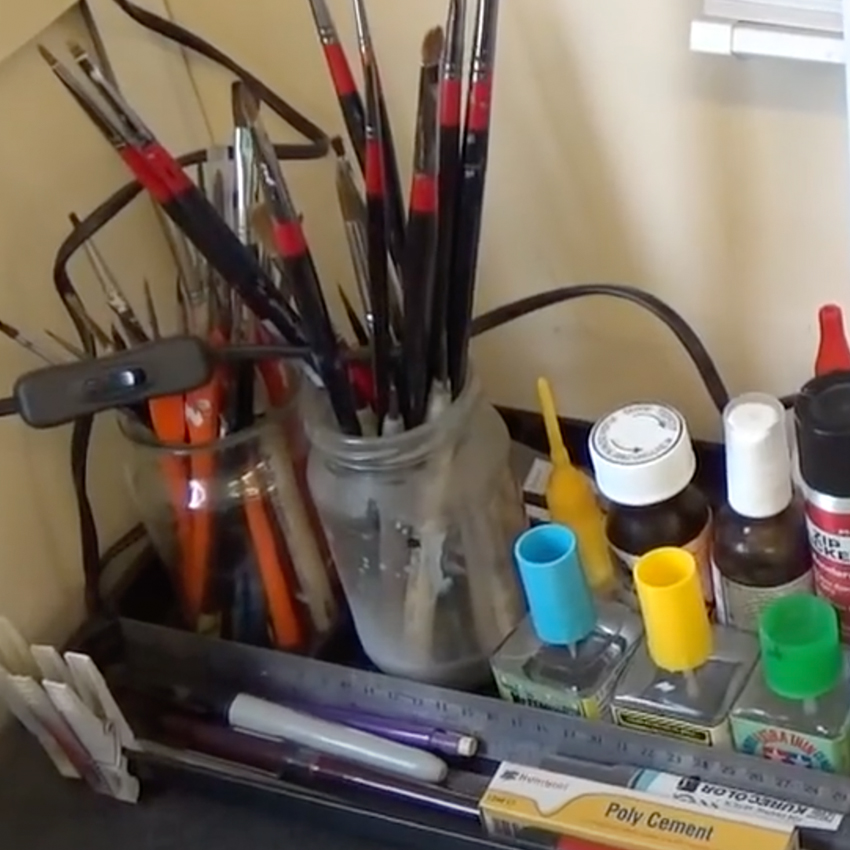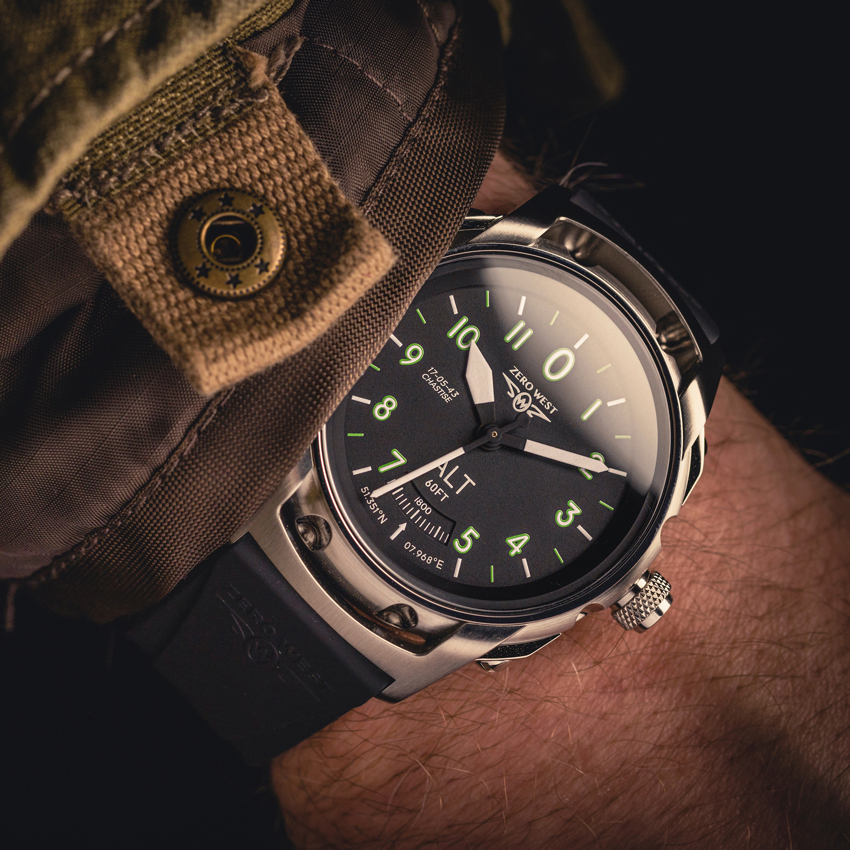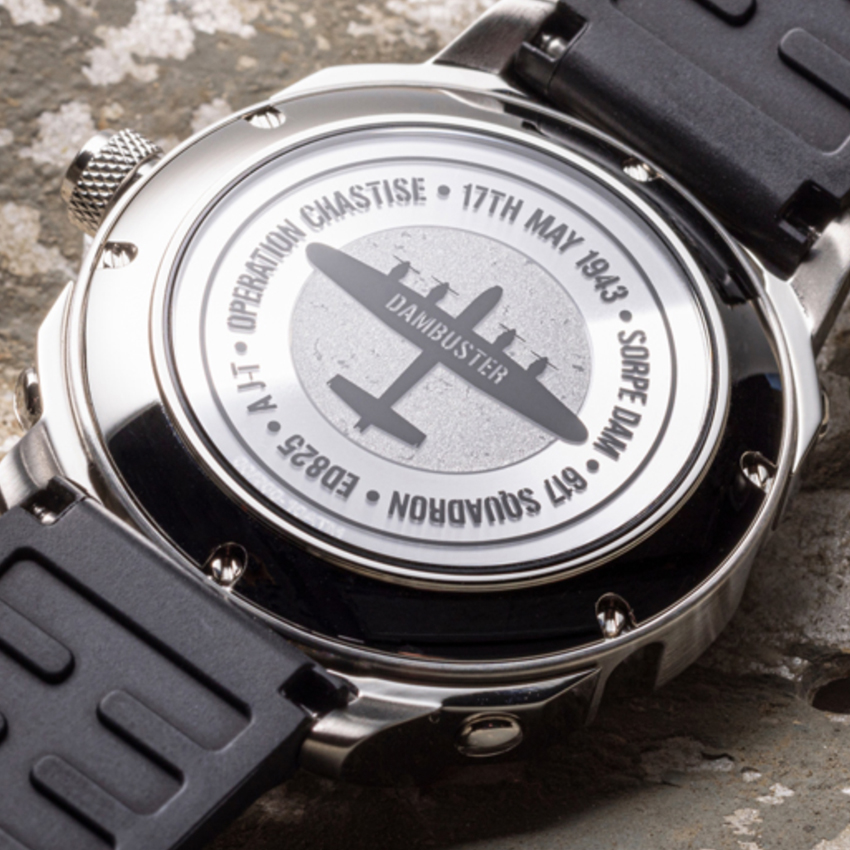World class Dambuster ED825 model by Spencer Pollard
DAMBUSTER ED825
Though I spend my life building models for a living and then writing about those projects for various publications, I’m rarely asked these days to build specific models for private clients. It was then with some surprise, that I was asked in the summer of 2021 to take on a commission that would not only stretch my skills, but would do so as the result of perhaps the most important single model I’ve ever tackled. Not only would the model be large and intricate, its finish would be one that involved many cutting-edge techniques. Friends would be asked to supply items I didn’t have. And then, as a final flourish, the decal artist for none other than Airfix, would be brought into play to create painting masks that would enable me to airbrush markings onto the model that in turn, made the whole thing a true, one-off.
I guess many of you will have built plastic kits over the years, boxes full of intricate parts that you glue together and then paint the results. Most of the projects will have been finished as directed in the kit, instructions and decals combining to create a model that many others will have completed in a not too dissimilar fashion: glue, paint, decals and then with a bit of luck, display. How many though will have had the chance to build something, that though assembled from a readily available kit, is utterly unique? That was the chance I had when I was asked to build an Avro Type 464, serial number ED825, or more pithily for those less than au fait with War Department nomenclature: a Dambuster Lancaster.
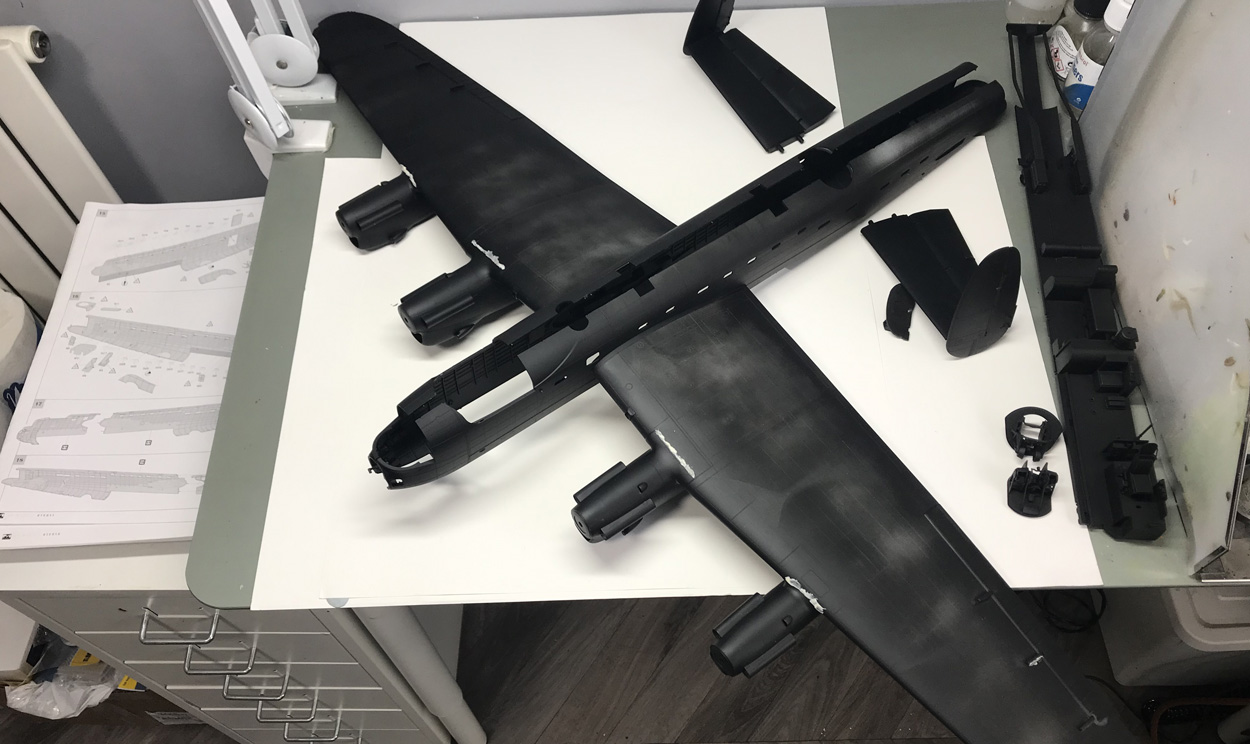
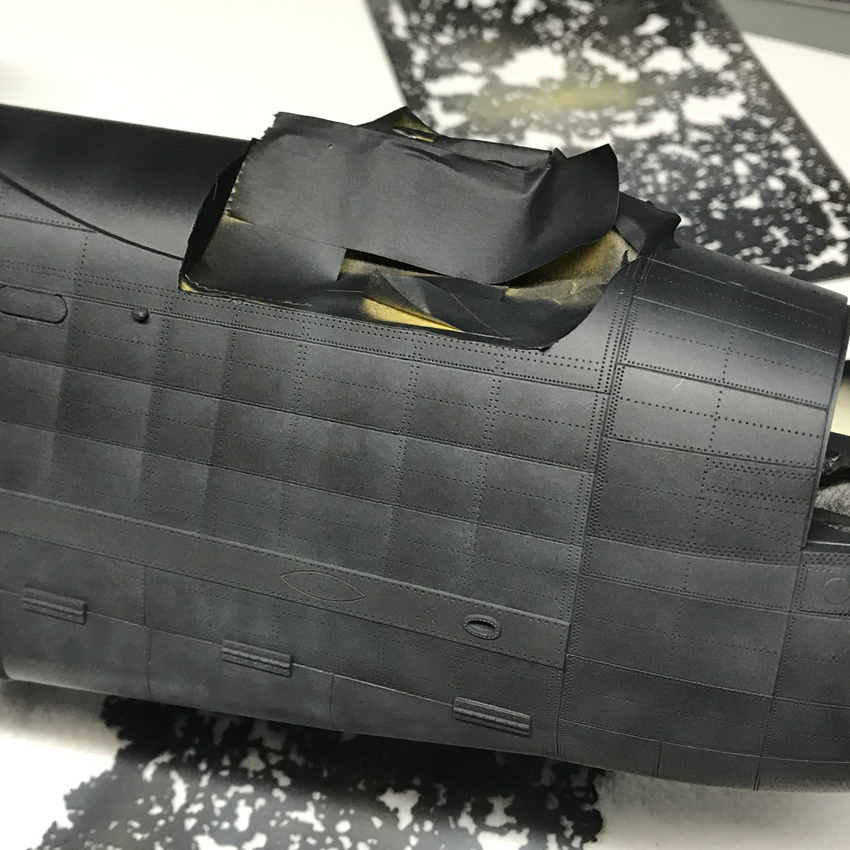
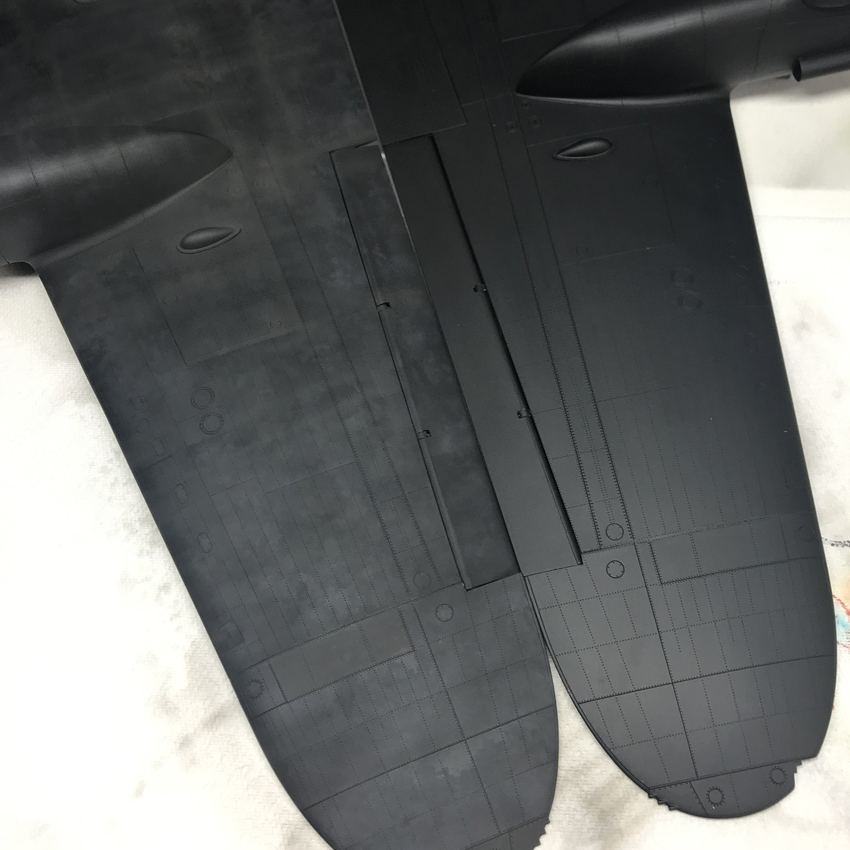
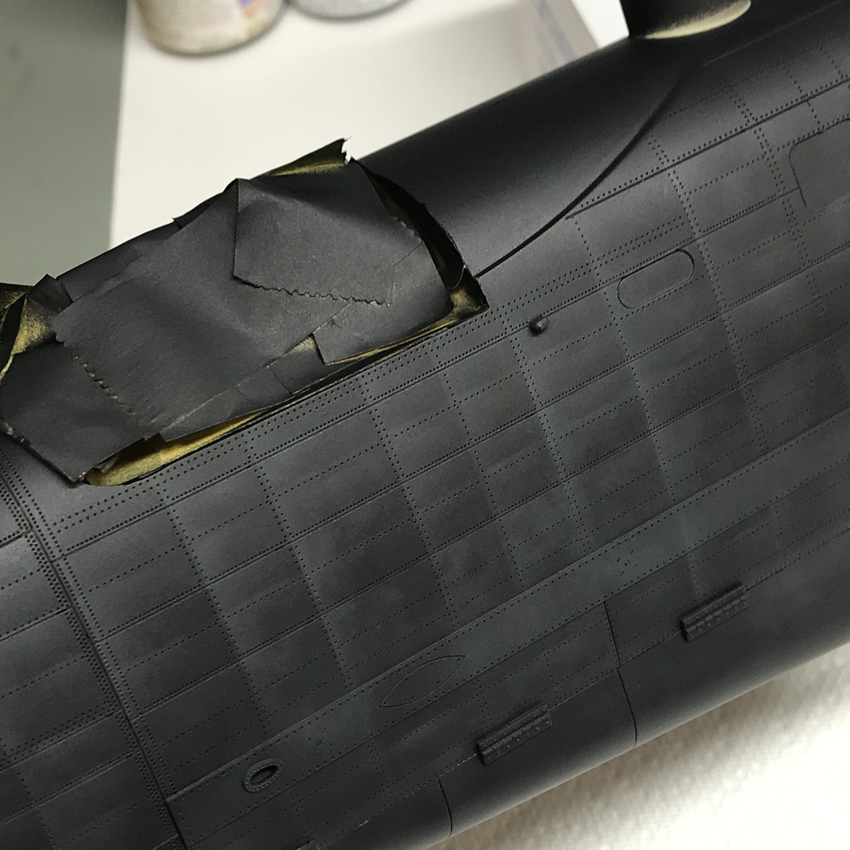
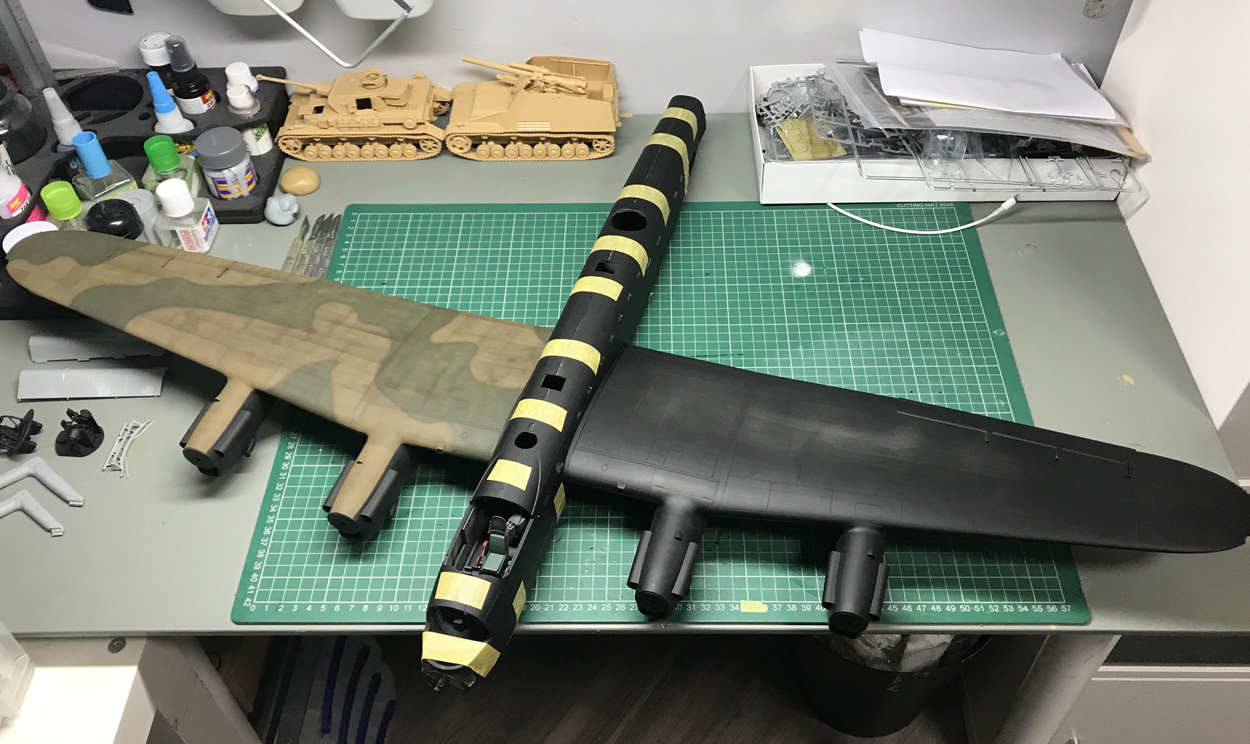
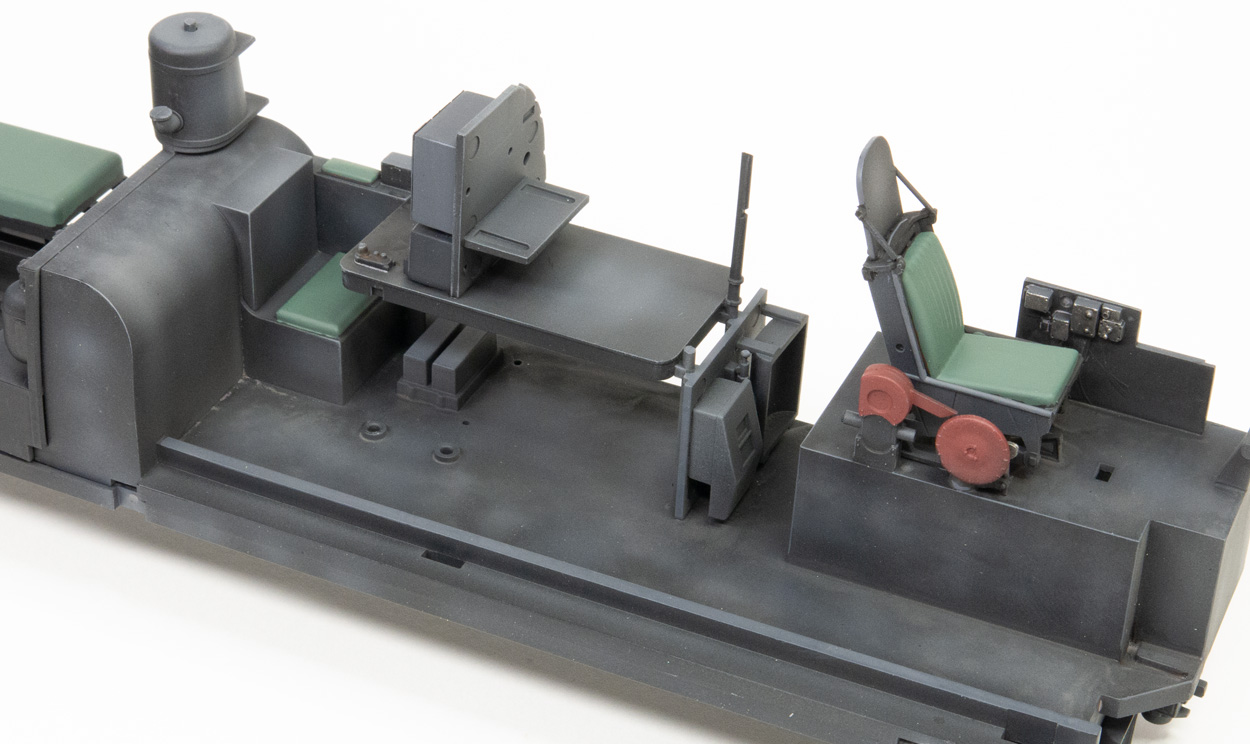
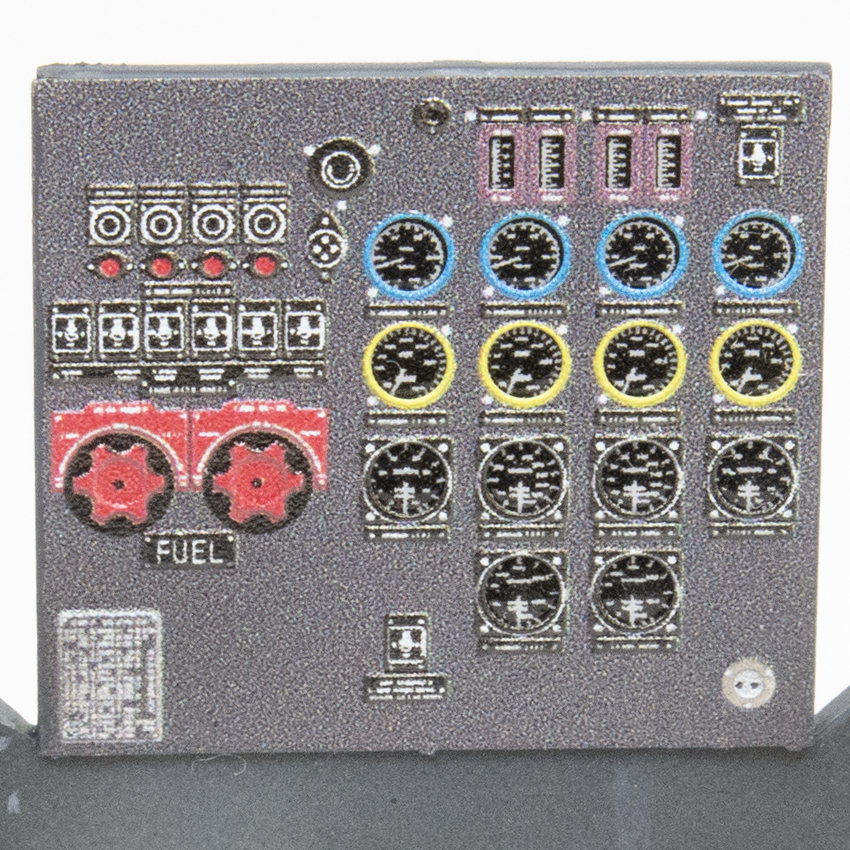
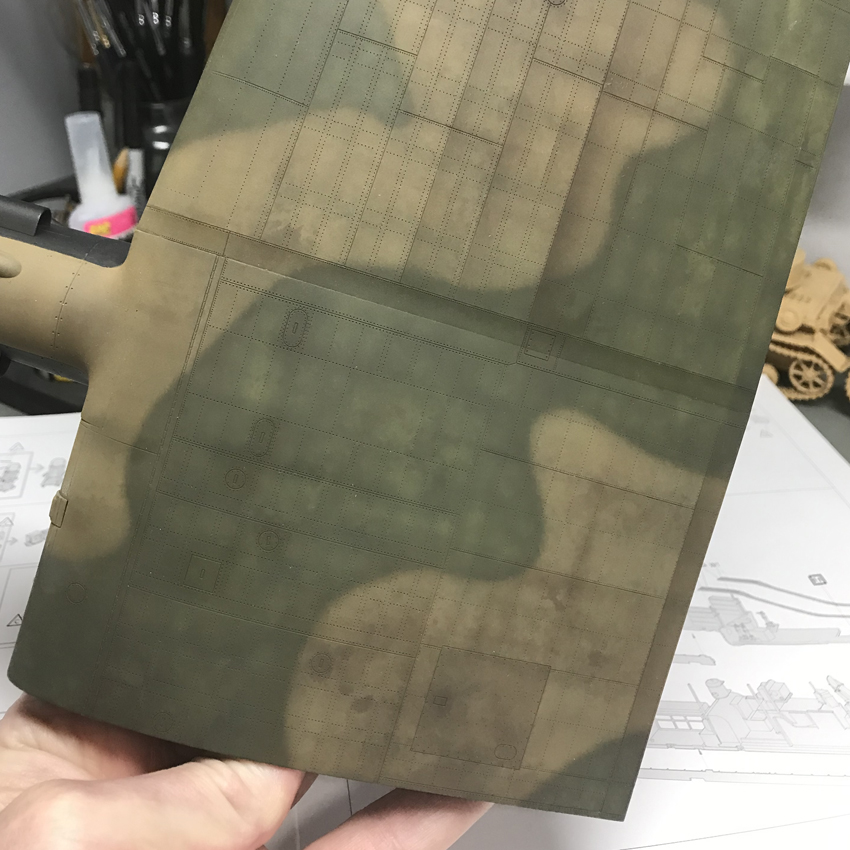
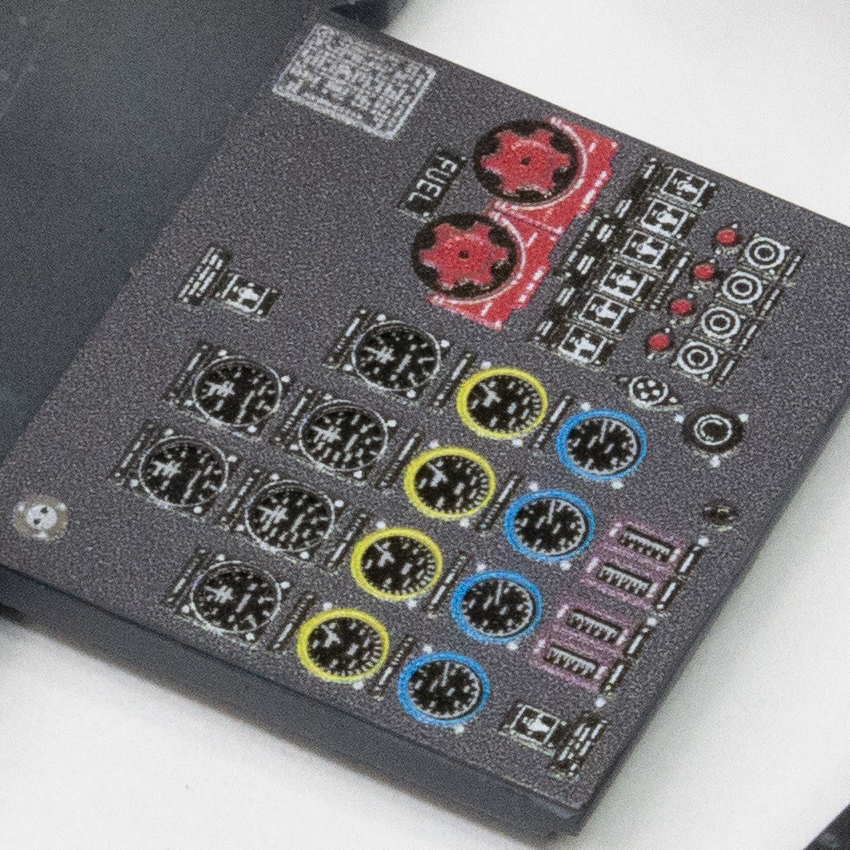
Despite the size of the model, construction, was not difficult, just a little ungainly. Large parts for the fuselage and wings caused issues with access around my workbench which is set-up for smaller models, but nothing that couldn’t be dealt with, with a little care. Graham’s plans for the model involved –– initially –– displaying it hung from the room, so my first thoughts were to lighten it as much as possible. Anything within the fuselage that couldn’t be seen for instance were removed, all of the engines left out, the undercarriage and wheels consigned to the bin. It was those items and the planning that went into dealing with the model without them, that took up the first few hours of the build, before assembling as much as I could ready for painting. As a professional, this is always something that must be done. Time is never on my side, so anything that I can complete in large sub-assemblies will drag the time down to a more appropriate amount. That way I have more of the allotted schedule to deal with what I need to work on, and don’t get sidetracked with superficial issues that won’t be seen either in, or on, the completed model.
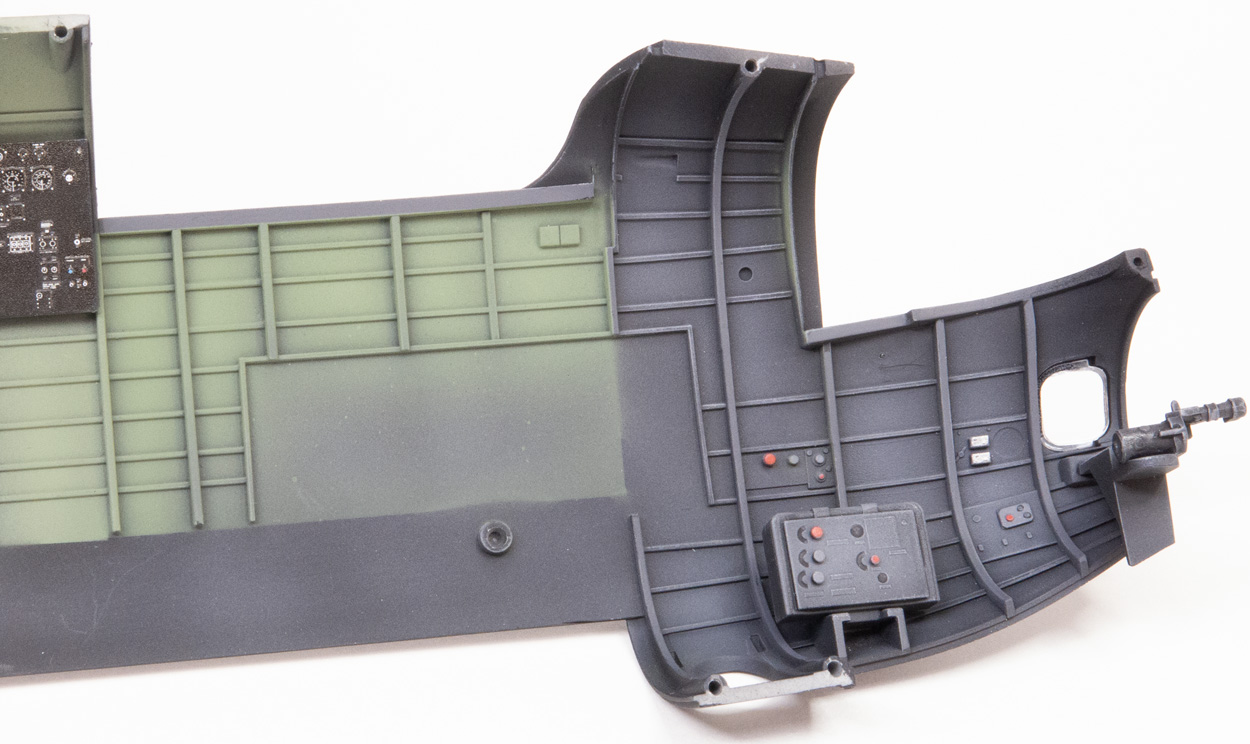
One area that I did concentrate on was the cockpit. Large and well-glazed in the real Lancaster, you can see a lot through the canopy of this 1/32 replica. Thankfully, the cockpit is nicely recreate by HKM, but even so, I thought it would be fun to add a little more in the way of fine detail. Those of you that have built models over the years may know that as well as the basic plastic kits that are oh-so familiar, you can now buy a whole host of add-ons, aftermarket accessories, that embellish what is supplied within the basic package. In this case, I used some very delicate metal parts that helped to detail the cockpit, seats and instrument panel, pre-coloured components both adding to the look of complexity, and cutting down on the time needed to paint such delicate and frankly tiny, features.
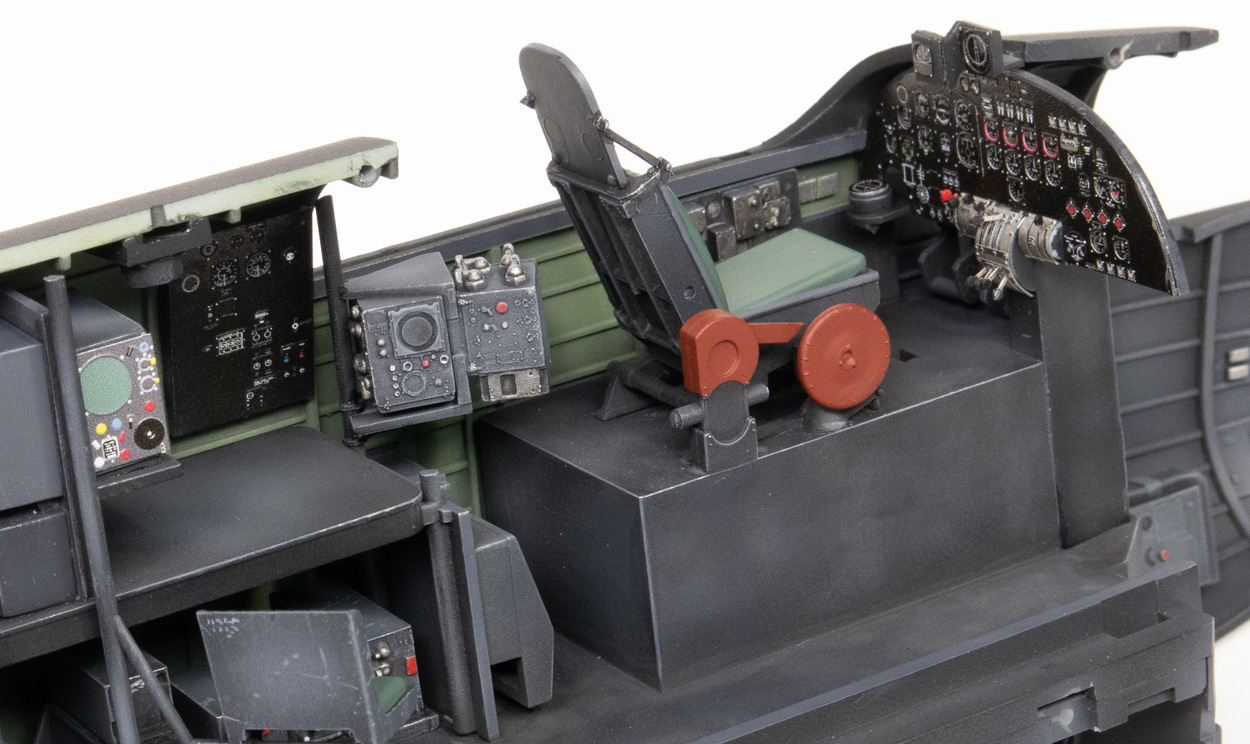
Other internal areas of the model needed less attention. Though there are two turrets on ED825, they are sufficiently cramped and dark, that little more than basic assembly and a coat of black paint was needed to capture their look in miniature. This also had a knock-on effect when it came to recreating the two gunners that would populate each one. Having no crew whatsoever to use as part of this build, I had to ask friends if they had any spares that I could build and paint for the cockpit and turrets. Though the pilot and navigator came from very new kits and were really nicely sculpted, those for the turrets came from a 1978 Matchbox kit of a Tiger Moth, so were less-than-impressive! Despite that, with a little corrective surgery (read ‘amputation’ as their legs were removed to allow them to fit…) and some careful painting, they actually worked really well, those cramped turret interiors, guns and heavily framed perspex bubbles, hiding a multitude of sins.
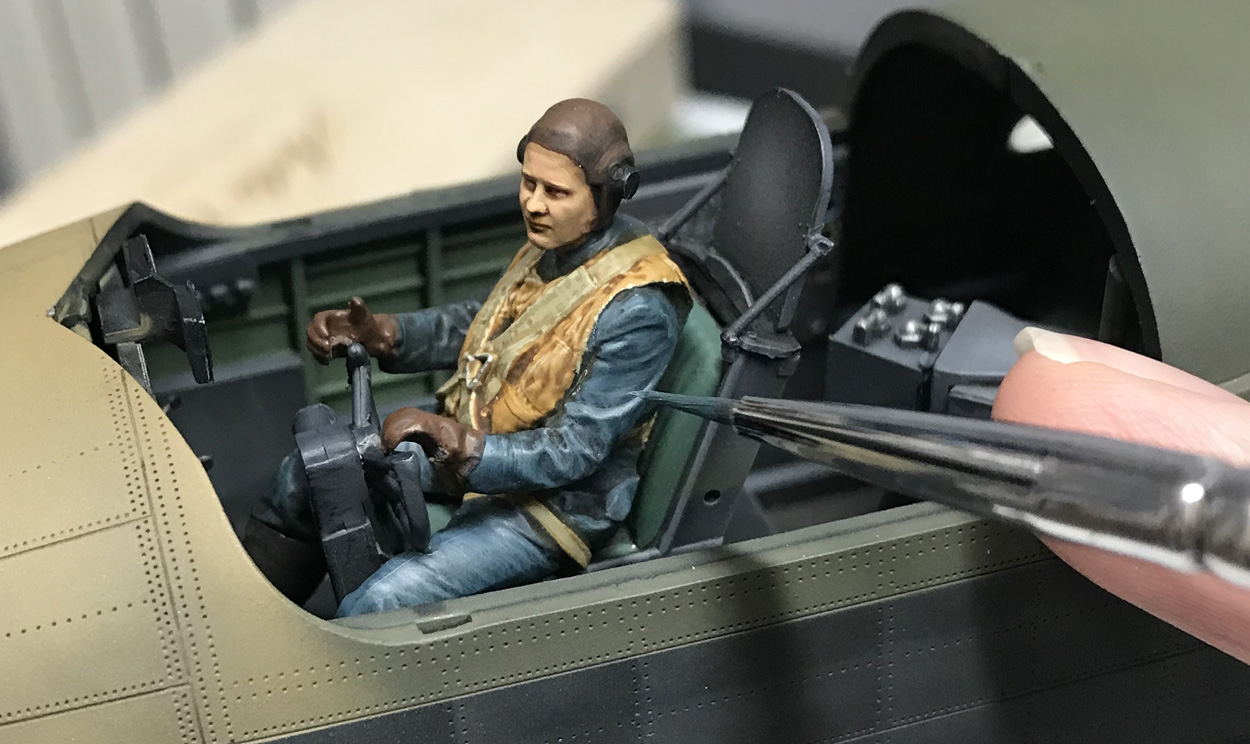
With major construction dealt with and the model all cleaned up to check for flaws, the camouflage finish could be applied. Sounding simpler than it turned out to be, the size of the model and some ideas that Graham wanted incorporating, had me scratching my head and then turn to a good friend for help. The first of those headaches, were the markings. ED825 is a very specific choice and though there are plenty of aftermarket decal sheets out there to deal with other Lancasters, there were none for this particular machine, even hunts for individual code letters, drawing something of a blank. That being so, I turned to my good friend Jonathan Mock, who just happens to be the decal designer for Airfix. He had already dealt with a number of Lancasters for that famous kit manufacturer, so he was able to draw up everything that I needed and then create custom self-adhesive masks that I could open up, apply to the model and then airbrush paint through to create perfectly rendered code letters, serial numbers and RAF Roundels and fin flashes. What that meant in turn, was that Zero West were not only getting their Lancaster to display, they were going to be the owners of one that was utterly unique, there being no other way to recreate this aircraft than with these custom masks, unless you decided to make your own. As it stands, there is no other 1/32 model of this aircraft, anywhere else on Planet Earth!
